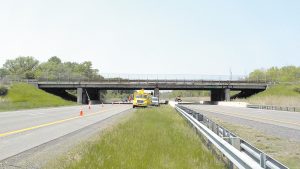There are a lot of things to be positive about in Central New York. Unfortunately, the economy is not one of them. Over the last decade, job growth in the Syracuse area has been anemic. The lack of jobs, among other things, has caused an outward migration of population, which places additional stress on our […]
Get Instant Access to This Article
Become a Central New York Business Journal subscriber and get immediate access to all of our subscriber-only content and much more.
- Critical Central New York business news and analysis updated daily.
- Immediate access to all subscriber-only content on our website.
- Get a year's worth of the Print Edition of The Central New York Business Journal.
- Special Feature Publications such as the Book of Lists and Revitalize Greater Binghamton, Mohawk Valley, and Syracuse Magazines
[bypass-paywall-buynow-link link_text="Click here to purchase a paywall bypass link for this article"].
There are a lot of things to be positive about in Central New York. Unfortunately, the economy is not one of them. Over the last decade, job growth in the Syracuse area has been anemic. The lack of jobs, among other things, has caused an outward migration of population, which places additional stress on our economy.
We are not alone. Almost all of upstate New York is facing similar challenges. Naturally, as with any crisis, state government wants to provide solutions.
Unfortunately, these solutions are often politically expedient reactions rather than rationally thought-out, long-term solutions.
One of the hallmarks of Gov. Cuomo’s economic-development policy is to provide state subsidies to private entities in hopes of boosting private investment. This is the idea behind the Buffalo Billion that he championed three years ago. This program is meant to provide the Buffalo area with $1 billion of state money over 10 years in an effort to spur private development. The governor says this program is bringing a “seismic” shift to the Buffalo economy. Unfortunately, there is no way of knowing this because there has been no public reporting on the effectiveness of the program.
Notwithstanding the unknowns of the Buffalo Billion, in this year’s state budget, the governor pushed through a similar $1.5 billion economic-development plan for other parts of upstate New York. This plan differs from the Buffalo Billion in that it is a competitive plan in which seven upstate regions will compete for three $500 million economic-development awards. Because of its zero-sum outcome for the regions that don’t win, the governor’s plan has been dubbed a “Hunger Games” approach to economic development.
I am not convinced that providing direct government subsidies to, for the most part, large corporations in the hope that they make capital investments and hire people in our state is the best approach to economic development. A better way would be to cut the cost of doing business in New York across the board so that both large and small businesses can benefit and better compete in our global economy. I’m not alone. Legislators from both sides of the aisle are questioning the governor’s Start-Up NY program, which promised 2,100 new jobs over a five-year period [by allowing businesses to operate tax-free in zones near universities and colleges across the state]. New York has spent $50 million on advertising and promoting the program, yet only created 76 jobs [in its first year, according to the state Department of Economic Development].
Putting my general concerns about these economic-development programs aside, one thing I am confident about is that Central New York will be able to put together an economic-development plan that will successfully compete for the $500 million. I look forward to working with our local economic-development officials in coming up with this plan. I also urge everyone who has any ideas or proposals for the Central New York development plan to either contact my office or the Central New York regional economic development council with your ideas. You can reach the council at (315) 425-9110 or by mail at 620 Erie Boulevard West — #112, Syracuse, N.Y. 13204.
William (Will) A. Barclay is the Republican representative of the 120th New York Assembly District, which encompasses most of Oswego County, including the cities of Oswego and Fulton, as well as the town of Lysander in Onondaga County and town of Ellisburg in Jefferson County. Contact him at barclaw@assembly.state.ny.us, or (315) 598-5185.



